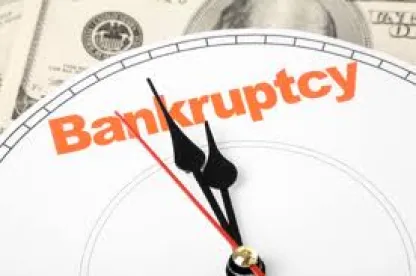Accept an unpalatable offer, or reject it and risk getting much less (or even nothing)? This is the choice stakeholders in chapter 11 bankruptcies increasingly face as a result of the proliferation of “deathtrap” provisions in plans of reorganization. For example, a class of bondholders may be forced to decide between accepting 60 cents on the dollar if they vote to accept a plan, or 40 cents if they reject. A class of equityholders may have to decide between accepting equity warrants, or rejecting and getting nothing. Adding to the paralysis of being confronted with a deathtrap is the reality that there is surprisingly little authority on whether, and under what conditions, such provisions are enforceable under the Bankruptcy Code. The authorities that do exist are split on this question—emboldening debtors seeking to precipitate chapter 11 settlements while leaving impaired classes of stakeholders to decry deathtraps as “draconian” and “coercive” mechanisms.
Why use a deathtrap?
Deathtraps tend to arise in situations where the debtors try to “cramdown” or force the plan on stakeholders that would otherwise vote against the plan. To confirm the plan under these circumstances, the debtors must obtain acceptance of the plan from at least one impaired class of stakeholders. This is where the deathtrap provision can be a valuable arrow in a debtor’s quiver. Even if a stakeholder desires a higher recovery than the plan provides, if it votes to reject the plan it could be stuck with less (or nothing) if the debtors are able to get another impaired class to accept the plan. Adding to this dilemma is the fact that the class needs to vote to accept or reject a plan. Even if an individual stakeholder votes to accept, it could be left empty handed if the class to which it belongs votes against the plan. In this way, the carrot-and-stick structure of the deathtrap can align the incentives of members inside of a class and the incentives of various classes towards a consensual resolution.[1]
Are deathtraps enforceable?
One of the earliest cases reveals that with deathtraps, the devil is in the details. In In re MCorp, the debtors’ plan included a deathtrap that authorized a payout to equity classes 15, 16, and 17 if class 15 voted for the plan, but nothing if class 15 voted against the plan.[2] The payout would be in the form of potential “overflow” from the proceeds of an ongoing litigation. Class 15 voted against the plan, triggering the deathtrap and thus leaving classes 15, 16, and 17 without even the potential for a distribution. In striking down the deathtrap, the court found it discriminated against classes 16 and 17 by depriving them the right to vote effectively because they could not know their status until after class 15 voted. The court also found that the deathtrap violated the absolute priority rule because the speculative nature of the litigation recovery left open the possibility that junior creditors could receive more than 100% of their claim if the equity classes are forced to take nothing under the deathtrap.
Importantly, the court in MCorp did not take issue with the fundamental incentive structure of deathtrap provisions. Instead, had the provision not tied the recovery of classes 16 and 17 to the vote of class 15, and had the distribution not been speculative, it is possible the court would have upheld the provision. This was the case in In re Drexel Burnham Lambert Group, Inc.,[3] where three equity classes (7, 8, and 9) were classified separately, but each was treated equally. The deathtrap there provided that if the class accepts the plan they would receive equity warrants, but if the class rejects the plan, the rejecting class would receive no distribution under the plan. The court distinguished this case from MCorp because the recoveries of the classes were not tied together.[4] Moreover, the proposed payout of equity warrants was not speculative like the overflow of litigation proceeds proposed in MCorp, and therefore not violative of the absolute priority rule.
The more recent line of cases recognizes that deathtraps have become customary in chapter 11 plans and acknowledges that they can be consistent with the Bankruptcy Code’s overall policy of fostering consensual plans of reorganization. By forcing a stakeholder to “fish-or-cut-bait,” deathtraps can have the effect of saving the expense and uncertainty of a cramdown fight.
In In re Adelphia,[5] the Equity Committee objected to the plan even though all 30 classes had approved the plan. The court reasoned that deathtrap provisions are not inconsistent with any provision of the Bankruptcy Code “if (but only if) the inducement is to give a stakeholder more than it would be entitled to, rather than to threaten to take an existing right away.” For example, a deathtrap that violates the best interests test by giving a stakeholder less than what they would receive in a chapter 7 liquidation would “take an existing right away” and would not be enforceable.
Where does the line get drawn?
Parsing the limited case law on the subject, it appears that the fundamental “carrot and stick” incentive structure of a deathtrap provision does not offend courts applying the Bankruptcy Code. Where deathtraps can cross the line depends on the terms that “trigger” the trap, as well as the degree to which the trap is punitive. For example, as seen in MCorp, the provision cannot be structured in such a way as to deny a class the right to effectively vote. Further, a trap that can be triggered through objection to certain aspects of the plan may be viewed as taking away the right of a fiduciary to object. As for the punitive side of the deathtrap, as long as it does not violate absolute priority or the best interests test, the deathtrap is likely to be upheld. Therefore, as long as a plan proponent constructs a deathtrap within these boundaries, the deathtrap can be a useful tool for a plan proponent to achieve a consensual plan of reorganization.
[1] Deathtraps are also useful for enforcing settlements to which representatives of a class have already agreed. For example, where the Debtors reach an agreement with the statutory unsecured creditors’ committee, individual unsecured creditors are not bound to vote to accept the plan. The deathtrap provision can help align the incentives of the individual creditors by creating the prospect of considerable downside for the dissenting creditors.
[2] In re MCorp Fin., Inc., 137 B.R. 219, 236 (Bankr. S.D. Tex.), appeal dismissed and remanded, 139 B.R. 820 (S.D. Tex. 1992).
[3] 138 B.R. 714, 716 (Bankr. S.D.N.Y. 1992).
[4] The court noted that “the only class that is affected by its negative vote is the class itself and not any junior class.” Id. at 717.
[5] 368 B.R. 140, 275-76 (Bankr. S.D.N.Y. 2007).



 />i
/>i

